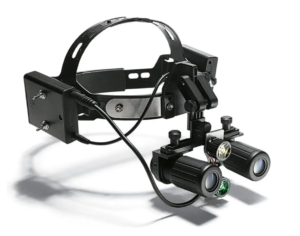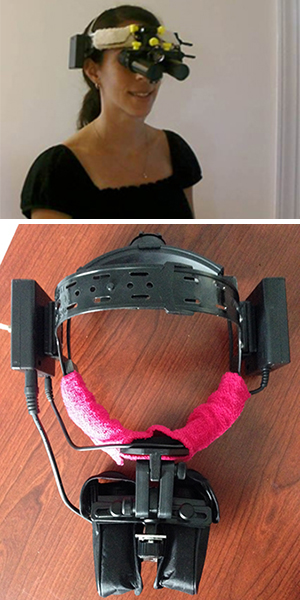CerviScope Development
 Family Health Ministries developed an inexpensive, portable, battery-powered colposcope, the CerviScope, for use in low-resource settings. The CerviScope (image from NY Times Magazine article below) replaces the large, energy-dependent colposcope used in your typical gynecology clinic. This lightweight device is easily transported to rural areas where access to healthcare is limited and electricity may not be available.
Family Health Ministries developed an inexpensive, portable, battery-powered colposcope, the CerviScope, for use in low-resource settings. The CerviScope (image from NY Times Magazine article below) replaces the large, energy-dependent colposcope used in your typical gynecology clinic. This lightweight device is easily transported to rural areas where access to healthcare is limited and electricity may not be available.
Clinicians use the CerviScope to detect precancerous cervical lesions that may require cryotherapy after a patient has either tested positive for the human papillomavirus (HPV) or had a suspicious papsmear. This device has also been used to improve inspection of the cervix following the application of acetic acid. This test is often refereed to as VIA and is often used in low resource countries like Haiti. Sixty seconds after applying vinegar to the cervix using a cotton swab, precancerous lesions turn white and can be discerned from pink healthy tissue. Using the Cerviscope improve visualization of these lesions.
The CerviScope has been tested in many countries, including Haiti, Ethiopia, Malawi, Guatemala, Pakistan, India, Nigeria, Kenya, Tanzania, Argentina, Honduras, Nicaragua and Naples. In May 2014, Gynocologist Kristina McCain, was featured in a New York Times blog describing her experience using the CerviScope in developing countries around teh globe. “The CerviScope in the Field” by Bonnie Rochman.You can also read a Research Summary of the CerviScope.
Thanks to a generous grant from Goldman Sachs, Family Health Ministries in collaboration with Applied Technologies Incorporated of Cary, North Carolina has mass-produce the CerviScope and they are now available to health care providers for $750/unit.
CerviScope Questions and Purchase
Contact Family Health Ministries at info@familyhm.org or 919.382.5500 with questions about the CerviScope or visit this link to Purchase a CerviScope.
“The MacGyver Cure for Cancer”
by Bonnie Rochman, Featured in The New York Times – Health Issue, May 23, 2014
“To prevent a disease that kills a woman every two minutes in the developing world, start with a headlamp.”
Two decades ago, David Walmer went on a volunteer mission with his church to Haiti. He was sent to paint walls at a hospital in the seaside town of Léogâne, but when the people there learned that Walmer was a doctor — he was a fertility specialist at Duke University — they asked him to spend the week with a local obstetrician-gynecologist named Jean-Claude Fertilien. Walmer was shocked by what he saw: Fertilien finishing a hysterectomy with the aid of a flashlight when the hospital generator failed to restart, for instance, or when an anesthesiologist wasn’t available for an emergency C-section, the doctor just numbing the skin and cutting. At one point, Walmer was called to the bedside of a young woman in her mid-20s with undiagnosed cervical cancer who had gone into septic shock. There was nothing to be done for her, and she died right in front of him. Walmer was appalled. In the United States, cervical cancer is considered a preventable disease. (Read more…)

